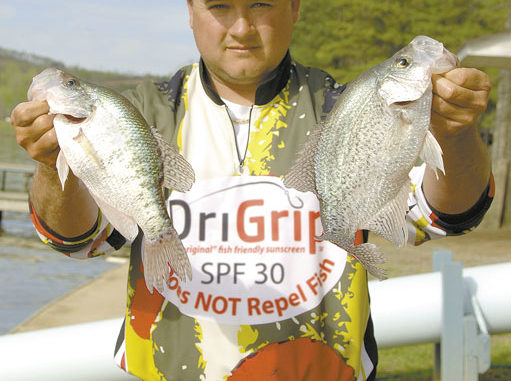
If you’re a fan of trolling for crappie, High Rock is the place to be this month.
Trolling has become one of the most-effective tactics to catch numbers of crappie and big slabs, but even among trollers, two schools of thought exist as to which presentation is best. You’re either pushin’ or pullin’.
Pushin’ is a slow-trolling tactic in which rods are kept mostly in the bow of the boat and extended over the gunwales; the lines stay vertical in the water and the amount of line out determines the precise depth to which the bait is presented. The boat eases around and over the top of underwater structure. The tactic is commonly known as “tight-lining.”
Pullin’ is a faster trolling tactic and more akin to what most consider as trolling. In long-line trolling, single or double jigs are cast out to the side and behind the boat and are trolled to the rear. Speed, weight of the bait, line diameter, and the amount of line out all combine to determine the depth you’re fishing.
High Rock Lake is a bonanza for trollers due to the sheer number of crappie available and its vast array of medium-depth flats, sloping points and relatively clean bottom. From late April through May, High Rock crappie are typically in postspawn mode, scattered, suspended and working their way back out from the shallow spawning grounds to cooler, deeper water where they will eventually spend the summer.
Jacky Jenkins of Denton has guided crappie fishermen on High Rock for 10 years. He said that with the spawn over by late April, the best pattern is to look for fish migrating toward the Yadkin River.
“The fish won’t be deep like they will be during the summer,” said Jenkins. “I find most of them suspending from 12 to 18 feet down in water that’s less than 23 to 25 feet deep.”
Like a lot of fishermen, Jenkins said long-line trolling can be an effective way to target scattered and suspended crappie, but he prefers to tight-line for them and in doing so, often finds better-sized fish.
“I see long-liners troll across a point and hit a small concentration of fish,” he said. “They boat a couple of fish then have to swing way out, turn around, and troll back across that spot so they can catch another fish or two. By tight-lining, I can haul around a lot quicker and even hover over the top of those fish, catching them the whole time.”
Jenkins said that unlike other well-known crappie lakes, High Rock doesn’t have a lot of bottom structure, basically only brushpiles. The bottom is either muddy or consists of rocks and rockpiles. While he catches fish over both kinds of bottoms — and sometimes right on the bottom — Jenkins highly favors fishing rockpiles.
“I use a 2-jig rig with a 1-ounce bass casting weight on the bottom when I troll,” he said. “Every so often, I’ll bump the bottom with that weight. I’m not sure why they do it, but some crappie will lay right on the bottom, and when that rig comes by and bounces (across) the bottom, the bait is right in the strike zone and they can’t pass it up.”
Although tight-lining is most commonly a slow-trolling method, Jenkins said he moves a little faster than most “pushers” so he can cover more water and draw more strikes. He has set his boat up to fish from the front and aims a sonar transducer straight down. He’s not fond of live bait, preferring instead to use Southern Pro curlytail jig bodies rigged on 1/32nd-ounce jigheads.
Instead of using a paddle wheel or GPS unit, Jenkins said he can better measure his trolling speed by the angle of the line as it enters the water. About 10 to 15 degrees off vertical works best for him.
“I can’t fish without it,” he said, referring to his bow-mounted depthfinder. “If I see fish suspended, I can reel up and and put the baits on them, but it’s pretty common to also see better fish right off the bottom, and those are the ones I’m trying to catch.”
Pullin’ in the other direction at High Rock is Steve Putnam of Shelby, a tournament crappie pro. Like Jenkins, he finds crappie heading out of the backs to the mouths of creeks. He targets suspended fish by pulling double-jig rigs shallow and fast from the back ends of the creek to the mouth. His trolling speeds range between 1.2 and 1.5 mph as measured by his GPS unit.
“I’ll find the edge of the creek channel and zig-zag back and forth across it, picking up scattered fish,” said Putnam. “Crappie relate to the channel edge when they travel, and by zig-zagging, the inside baits will drop down and mimic an injured baitfish, while the outside baits will rise up and go faster, like a fleeing minnow. Both situations can cause a reaction bite, and that’s often what it takes, especially toward the middle of the day.”
Putnam runs eight rods from rod-holders spaced across the back, corners, and rear side-rails of his boat. He ties a 1/32nd-ounce jig and a 1/16th-ounce jig on each rod, trolling them on 4-pound Vicious clear mono.
“High Rock is the best long-line trolling lake in the state,” said Putnam. “It has plenty of crappie. Some folks may complain about the average size of the fish, but when the (N.C. Wildlife Resources Commission) put an 8-inch size (minimum) on this lake, the average sizes started coming up.”
Jig styles and colors often play a vital role in catching big stringers of crappie. Jenkins and Putnam each have their favorites, although they agree that action baits, those with a paddletail or curlytail, work better during the postspawn.
“My best colors are a black and red with chartreuse tail, chartreuse shad, and popsicle,” Jenkins said. “About all the jigs I fish are Southern Pro Hot Grubs which have a really wide curlytail and give off a lot of action.”
“I use a lot of Charlie Brewer Sliders, Kalin’s, and Bass Pro Triple Threat grubs,” Putnam said. “Anything that gives off a lot of action is a must. At High Rock, my two best colors are a blue ice with chartreuse tail and a color that Charlie Brewer made at my request, silver frog. It has both green and silver tones to it. One piece of advice — don’t hesitate to change colors. I might go through 50 colors in a day, and most of the time, I’ll find that bigger fish are keying in on one specific color — even though there might be another color that is catching more fish.”
Whether you decide to push, pull, bottom-bounce or fish in the upper end of the water column, Putnam and Jenkins recommend targeting creeks on the lower end of the lake: Flat Swamp, Panther and Abbotts.
“Start at the mouth and work you way back,” said Jenkins. “You shouldn’t have to go too far in before crappie start showing up on the depthfinder.”

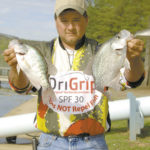
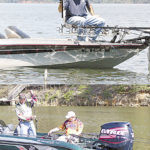
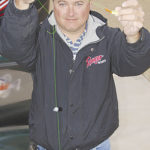
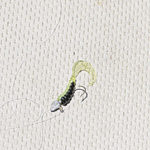
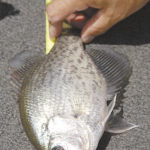
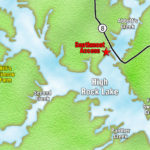

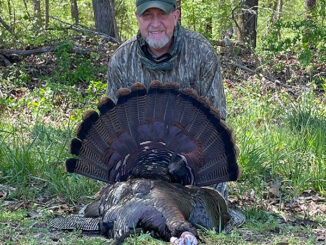


Be the first to comment